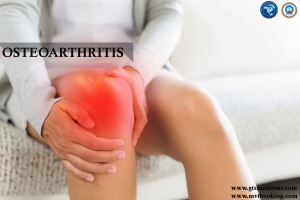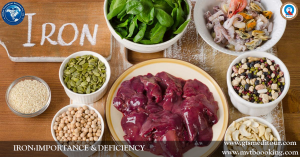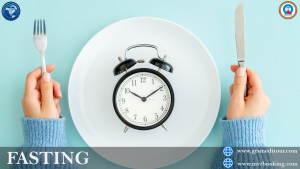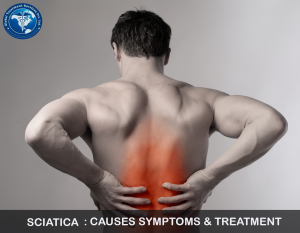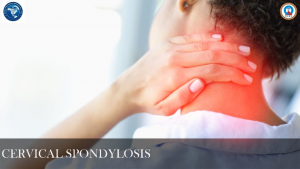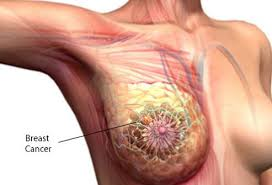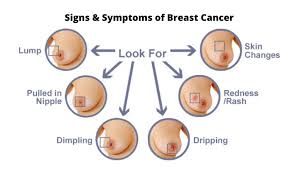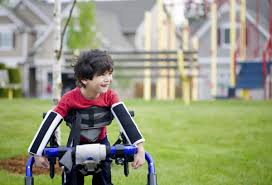##On march 16 th every year, India observes National Vaccination Day.It was on this day in 1995 that the first dose of Oral Polio Vaccine was given in India##
DENGUE FEVER
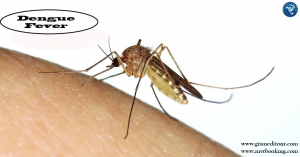
Dengue is a mosquito borne viral disease. It is transmitted by female mosquitoes mainly of species Aedes aegypti to a lesser extent Aedes albopictus. These mosquitoes are also vectors of chikungunya,yellow fever etc
SYMPTOMS
Symptoms range from mild to severe
MILD DENGUE FEVER
Symptoms can appear upto 7 days after being bitten by the mosquito that carries the virus
They include
- aching muscles and joints
- body rash that can disappear and then reappear
- high fever
- intense headache
- pain behind the eyes
- vomiting and feeling nauseous
Symptoms usually disappear after a week and mild dengue rarely involves serious or fatal complications
DENGUE HEMORRHAGIC FEVER
At first symptoms may be mild but they gradually worsen within a few days.s well as mild dengue symptoms there may be signs of internal bleeding.
- bleeding from mouth,gums or nose
- clammy skin
- damage to lymph and blood vessels
- internal bleeding which can lead to black vomit and feces or stools
- a lower number of platelets in the blood
- sensitive stomach
- small blood spots under the skin
- weak pulse
DENGUE SHOCK SYNDROME
It is a severe form of dengue.Apart from symptoms of mild dengue fever,the person may experience
- intense stomach pain
- disorientation
- sudden hypotension or a fast drop in blood pressure
- heavy bleeding
- regular vomiting
- blood vessels leaking fluid
TREATMENT
Dengue is a viral disease,so there is no specific treatment or cure.However intervention can help depending upon how severe the disease is
For milder forms ,treatment include
- Preventing dehydration-The person should drink clean water. Re hydration salts can also help replace fluids and minerals
- Pain killers such as Tylenol or paracetamol.They can help lower pain and fever
More severe form of dengue fever may need
- Intravenous(IV) fluid supplementation or drip , if the person cannot take fluid by mouth
- blood transfusion, for patients with severe dehydration
HIGH RISK AREAS
- Central and South America
- The Caribbean
- Tropical Asia,including Bangladesh,Indonesia and parts of China
- Northern Australia
PREVENTION
- Clothing :Reduce the amount of skin exposed by wearing long pants,long sleeved shirts and socks
- Use of mosquito repellents
- Use of mosquito traps and nets
- Door and window screens
- Timing:Try to avoid being outside at dawn,dusk and early morning
- Stagnant water-Cleaning stagnant water can help to reduce risk
Prepared by Dr Sajna Hamza
OSTEOARTHRITIS
DEFINITION
Its a degenerative joint disease.It can be caused by aging,hereditary,injury,trauma,and another diseases.It is a form of arthritis that features the breakdown and eventual loss of the cartilage of one or more joints.It is the most common joint disease
CAUSES
PRIMARY OA
- With aging the water content of the cartilage increases and the protein makeup of the cartilage degenerates as a function of biologic processes
- Eventually cartilage begins to degenerate by faking or forming tiny crevasses
- In advanced osteoarthritis,there is a total loss of the cartilage cushion between the bones of the joint
- Repetitive use of the worn joints over the years can mechanically irritate and inflame the cartilage causing joint pain and swelling
- Loss of cartilage cushion causes friction between the bones leading to pain and limitation of joint mobility
- inflammation of the cartilage can also stimulate new bone outgrowth
SECONDARY OA
It is a form of OA that is caused by another disease or condition.It includes
- Obesity
- Repeated trauma or surgery to the structures
- Abnormal joints at birth
- Gout
- Diabetes
- Other hormone disorders
SYMPTOMS
- Pain and stiffness with loss of range of movement and function
- Swelling
- Warmth
- Creaking of the affected joints
INVESTIGATIONS
- No blood test for the diagnosis of OA
- X-ray of the affected joints can be used to diagnose OA
HOME REMEDIES
- Rest
- Exercise
- Diet control with weight loss
- Physical therapy
- mechanical support devices such as knee braces
TREATMENT
- Oral medications
- Topical treatments applied to the skin surface surrounding the joint affected by OA include anti inflammatory lotions
- Surgical treatments for knee include arthroscopy,cartilage repair,osteotomy and knee arthroplasty
For getting opinion from our network of hospitals visit mvtbooking.com or send a email to query@gtsmeditour.com
Prepared by: Dr Sajna Hamza
IRON
INTRODUCTION
Iron is most important among the minerals.it is the most common deficiency among females.Adult human body has about 3-4 gm,,in that 60-70% is present in blood and the remaining part in liver as storage
IMPORTANT FUNCTIONS
- It is essential in formation of hemoglobin
- It regulates the body temperature
- Muscle activity is dependent on the status of iron
- It helps in catacholamine metabolism
- It boosts up immune system
- It is a constituent of myoglobin,cytochromes, catalyses and certain enzymes
- The most important point ,it helps in oxygen transport and cell respiration
SOURCES
Animal origin haem iron-Liver,meat,poultry and fish.They are readily absorbed due to absence of inhibitors
Plant origin no haem iron-Cereals,green leafy vegetables,legumes,nuts,jaggery. Absorption is hampered by inhibitors ie,phytates,oxalates,carbonates,phosphates and dietery fibers
FACTORS WHICH HELP IN IRON ABSORPTION
Ascorbic acid is a promoter ,which helps absorption of iron.Absorption is more when there is enhanced demand.
STORAGE
Stored in
- Liver
- Spleen
- Bone marrow
- Kidney
MODES OF IRON LOSS
- Hemorrhage-Physiological -menstruation,child birth-pathologically by hook worm ,malaria,hemorrhoids,peptic ulcer
- Basal losses-urine,sweat,bile,IUCD
STAGES OF IRON DEFICIENCY
- 1st stage-decreased iron store
- 2nd stage-latent iron deficiency ie exhausted iron store
- 3rd stage-iron deficiency in blood ie Anemia
Anemia-mild 10-11.9 gm%
Moderate – 8-9.9 gm%
Severe – below 8 gm %
CLINICAL FEATURES
- Malaise
- Breathlessness
- Weight loss
- oedema
- pallor
- angular stomatitis
- glossitis
- brittle finger nails
- bald tngue
DIAGNOSIS
Blood test
- Hb% Normal value 12-14 g%-females,14-16 g% in males
- serum iron concentration 0.8-1.8 mg/L normal
- serum ferritin value below 10 mcg/L indicate absence of stored iron
- serum transferin saturation -it should be above 16%,normal is 30%
Prepared by: Dr SAJNA HAMZA A
FASTING
DEFINITION
Fasting is defined as “complete voluntary abstinence from taking any kind of food for particular time,in order to give rest to digestive system”.It helps to get rid of flesh tainted with toxic filth.It is one of the hygienic practices,which gives rest for digestive system and radical cure of diseases.It is one of the cheapest and important modes of treatment
CLASSIFICATION
- According to duration
- short duration-2-5 days mainly with water and fruits
- intermittent -1-2 days with satvika diet
- long duration-more than 10 days
2.Depending upon the purpose of fasting
- political
- religious
- therpeutic
3.Depending on the method of fasting
- dry fasting-without drinking water
- water fasting-for acute diseases
- juice fasting-acidic-in obesity and respiratory disease & alkaline – in kidney disorder diabetes
- fruit fasting-weak person
- mono diet fasting-only one type of diet in meal
4.Depending on condition
- fasting in healthy
- fasting in acutely ill
- fasting in chronically ill
PURPOSE OF FASTING
A man who treats his stomach unfairly,by injudicious eating,i.e eating without hunger,by over eating etc man becomes sick.He can be cured of his illness by fasting or eating in less quantity.Highest level of vital economy is achieved by fasting.
EFFECTS OF FASTING
According to Chandogya upanishad ,life is made of water ,so one can fast on water alone,but not too long a time.Sunlight ,air and ether help to sustain life during fast.Body gets rid of the flesh tainted with toxic filth.The person feels weak as the body is in the process of eliminating foreign mater.It is temporary weakness
FASTING IN ACUTE DISEASES
One should fast till the disease subsides and person has sense of lightness.One should break the fast in proper way and help to re establish the health
FASTING IN CHRONIC DISEASES
Long fasts are contra indicated.Short fasts are recommended with proper interval.When patient is not fasting,positive foods will not deposit foreign matter in the body should be taken sufficiently.As the life force is weak due to unhygienic living,occasional short fasts will be ideal to remove the accumulated morbid matter.Latent disease will be alleviated by right dieting and occasional fasting.In case of chronic disease where there is no hunger ,person may fast from 3-5 days.If there is no return days of hunger,patient should take positive diet for few days and then again fast
METHOD OF FASTING
Fasting is considered not from the last meal,but after the meal has been digested.One should drink water when ever he feels hungry.Daily from sunrise the faster should be without food for 6 hours or more , until natural hunger is experienced and then take light meal with positive food.If one takes 2 meals per day,it is ideal.
Chronically ill patients are unfit for fasting.They can be provided with highly positive drink,not more than four times per day.Even fasting daily for few days in a month can also be indicated.One should drink water when ever he feels thirsty.
FASTING IN DESTRUCTIVE DISEASES
Fast every day for few hours,Take less food which is light and positive in nature,Fresh fruits,vegetables,raw and uncooked food are indicated.Avoid milk,flesh and other heavy foods
ACUTE EFFECTS OF FASTING ON THE BODY
- Formation of gas-disintegration of old putrid matter leads to gas formation
- Temperature increases in first few days
- cotton mouth-combination of morbid elements takes place and filth is expelled through mouth ,leads to coating of tongue which is called as cotton mouth
- By third and fourth day mucous membrane of intestine starts eliminating morbid matter ,indicated by fetid breath and coated tongue
- bilious vomiting produced due to hepatomegaly
- offensive perspiration again due to expulsion of morbid matter
- breaking down of tissues produce increased worne out cells and other morbid matter
PREPATION
It is safe to prepare system for the fast through low protein diet,rich in positive minerals or raw food diet.For prolonged fast supplement in the form of dilute acid,acid fruit juices which have neutralizing effect on toxins and elimination effect.They are splendid tonics ,antiseptics and life elements
BREAKING THE FAST
Small quantity of light food,which can be digested easily like dilute fruit juices,tender coconut water,vegetable soups and thin butter milk should be taken.Later when digestive power increases,heavy foods can be consumed.After recovery always consume positive food in the quantity
PREPARED BY:DR SAJNA HAMZA A
VITAMIN A
DEFINITION
Vitamins are organic compounds,required to the body in small amounts,so categorized under micro nutrients.Also classified under protective and regulatory food.They do not yield energy,but help the body to utilize other nutrients
CLASSIFICATION
- Fat soluble – Vitamin A,D,E &K
- water soluble – Vitamin B & C
VITAMIN A
- It acts as a regulator of cell and tissue growth and differentiation
- it is a group of unsaturated nutritional organic compounds that includes retinol,retinal and several pro vitamin A carotenoids
- it is important for growth and development for the maintenance of the immune system
- for good vision
- immunity-susceptibility to infection and lowered immune response is found in deficiency of vitamin A
- Vitamin A is needed by the retina of the eye in the form of retinal ,which combines with protein opsin to form rhodopsin,the light-absorbing molecule necessary for both low light and color vision
- it also functions in a very different role as retinoic acid,which is an important hormone like growth factor for epithelial and other cells
- Vitamin A covers both vitamin and pro vitamins
- Vitamin A retinol is from animal source
- Pro vitamin of vitamin A is beta-carotene.It is converted into retinol by intestinal mucosa
SOURCES
- Animal origin- Liver,eggs,butter,cheese,whole milk,fish and meat
- Plant origin – green leafy vegetables,spinach,yellow fruits,papaya,mango,pumpkin,roots like carrot
- Artificially fortified foods-milk, vanaspathi,margarine
STORAGE
Stored in the liver in the form of retinol palmitate.The store is sufficient to meet the needs for 6-9 months
DEFICIENCY
Predominantly ocular manifestations,less commonly extra ocular manifestations also found
XEROPHTHALMIA
it includes all ocular manifestations of Vitamin A deficiency from night blindness to keratomalacia
- Night blindness
- Conjunctival xerosis
- Bitots spots
- Corneal xerosis
- keratomalacia
Night blindness:
It is beginning stage of Vitamin A deficiency with inability to see in the dim light
Conjuctival xerosis:
First clinical sign of Vitamin A deficiency ,conjunctiva is dry and non wettable. Instead of smooth and shining conjunctiva appears muddy and wrinkled
Bitots spots:
Triangular pearly white or yellowish foamy spots on bulbar conjunctiva on either side of cornea ,usually bilateral is known as bitots spot
Corneal xerosis:
Serious condition,cornea appears dull,dry,non wettable and eventually opaque.Severe deficiency leads to corneal ulceration.It may heal with scars which are opaque
Keratomlacia:
Liquefaction of cornea takes place ,cornea may become soft & may burst open.The process is rapid ,eye collapses and vision is lost
EXTRA OCULAR MANIFESTATIONS
They consist of follicular hyperkeratosis, anorexia and growth retardation
MEASURES FOR PREVENTION
- Improvement of diet ,regular and sufficient intake of vitamin rich food
- By preventing contributory factors Ex.PEM,respiratory infection,diarrhea,measles
- Prophylactic dose of vitamins A-single massive dose of retinol palmitate orally,to all preschool children(1-6 yrs)once in 6 months is advocated, 1-6 yr -2,00,000 IU of retinol palmitte, 6 months -1 yrs -1,00,000 IU of retinol palmitate
For getting opinion from our network of hospitals visit mvtbooking.com or sent a email to query@gtsmeditour.com
SCIATICA
DEFINITION
The sciatic nerve is the largest nerve in the human body and sciatic is pain which occurs due to irritation of the sciatic nerve
The pain which might feel like a bad leg cramp or can be a shooting pain that makes standing or sitting nearly impossible,is typically felt from the lower back to behind the thigh and radiates down below the knee
CAUSES
- Herniated or slipped disc:this will cause pressure on the nerve and as a result pain occurs along path of the nerve
- Piriformis syndrome:which occurs when the small piriformis muscle,which lies deep in the buttocks,becomes tight and spasms,thus putting pressure on and irritating sciatic nerve
- Spinal stenosis: this results from narrowing of the spinal canal which puts pressure on the nerve
- Spondylolisthesis: that occurs when one vertebrae slips,so that it is out of line with one above it,narrowing the opening through which sciatic nerve exist
RISK FACTORS
- Changes in the spine due to advancing age,such as herniated disks and bone spurs
- being obese which stresses the spine
- sitting for prolonged period
- leading a sedentary life style
- diabetes
- jobs which require to carry heavy loads,drive for long periods,repeatedly twist your back
SYMPTOMS
- Lower back pain
- pain in the rear or leg which worse when sitting
- hip pain
- burning or tingling in the leg
- weakness
- numbness
- difficulty in moving the leg or foot
- shooting pain making difficulty in stand up
COMPLICATIONS
- Permanent nerve damage
- loss of feeling in the affected leg
- weakness of leg
- loss of bowel or bladder control
INVESTIGATIONS
- X ray
- CT
- MRI
TREATMENT
- Medications
- physical therapy:your Doctor may recommend to perform a few back exercises and streches
Exercise:in Sciatica exercises usually the focus on stregthening and streching the spinal column and muscles and tendons
- Surgery:Micro discectomy is a common surgical approach used to treat sciatica that is caused by a lumbar disc herniation.in this surgery,a small part of the disc material under the nerve root is taken out.while technically an open surgery,a microdiscectomy uses minimal invasive techniques and can be done with relatively small incision and minimal damage
For getting opinion from our network of hospitals visit mvtbooking.com or sent a email to query@gtsmeditour.com
CERVICAL SPONDYLOSIS
DEFINITION
It refers to a degenerative process affecting the vertebral disc and facet joints that gradually develops with age.The condition can narrow the spinal canal that results in the compression of spinal cord and nerve roots
Usually the conditions associated with cervical spondylosis arise from the regular wear and tear of the bones and cartilages located in the neck region
CAUSES
Bone spur: The overgrowth of the bones in the neck or spine area could be due to body trying to grow some extra bone for making the spine stronger.However the growth of extra bones could start pressing on delicate ares of the spine including spinal cord ,nerves and surrounding muscles leading to pain and discomfort
Herniated Discs: This happens due to the development of cracks in the spinal discs.these cracks allow the leakage of the internal material required for cushioning.The material could press on the nerve and spinal coed and would thus,result in symptoms
Dehydrated spinal discs: The presence of the gel like material between the discs of spine bones could dry out with passage of time.this would lead to rub the spinal vertebrae against each other that could result in immense pain
Injury: Injury in neck during some accident or fall
RISK FACTORS
- Age over 60
- accident
- excessive work resulting in wear and tear
SYMPTOMS
- Pain around shoulder blade
- pain along entire arm and finger
- stiffness in the neck muscles
- constant headaches that usually occur towards the back of head
- numbness or tingling affecting the arms and shoulder
DIAGNOSIS
While making the diagnosis of cervical spondylosis ,it is essential for the doctor to rule out the possibility of having fibromyalgia
INVESTIGATIONS
- X-ray
- CT
- MRI Scan
- EMG
COMPLICATIONS
- Spinal nerve injury
- Neck Injury
- Paralysis
TREATMENT
- Physical therapy
- Medication
- Surgery-When the condition becomes severe,then surgery of the affected area remains only option to get relief from pain
ANTERIOR CERVICAL DISKECTOMY AND FUSION
In this the problematic disk and additional bone spur are removed and stabilize the spine through spinal fusion .Typically a plate with screws is added to the front of the spine for added stability
For getting opinion from our network of hospitals visit mvtbooking.com or send a email to query@gtsmeditour.com
BREAST CANCER
A cancer that forms in the cells of the breast.common between age 40-50.
PRECIPITATING FACTORS
- Unmarried women
- nulliparous women
- women with bad obstrectic history
- high in oral contraceptives
SYMPTOMS
- lumb in the breast
- bloody discharge from breast
- changes in shape or texture of the nipple or breast
CLASSIFICATION
a) intra dochal -within the ducts
b) extra dochal-outside the ducts
CLINICAL TYPES
1.Invasive duct carcinoma-common form ,lumb is very broad &irregular causes drowning of the nipple .
2. Medullary carcinoma-primary tumors is soft and circumscribed and may attain a large size
3. Colloid CA/Tubular CA – Appear as well defined masses common in elderly
4.Inflammatory CA – Seen usually during pregnancy and lactation.Breast is often painful
5. Technical Types
Mastitis Carcinoma:i.e carcinoma + inflammation ;retracted nipple;skin is red ,warm and painful
MANCHESTERS STAGING OF THE BREAST CANCER
Stage 1 – Growth confined to breast;An area of adherence to the skin smaller than the periphery of the tumor does not affect staging.Even ulceration of the skin in the area defined does not alter it
Stage 2 – same as stage 1 but palpable,mobile,lymph node gathering of growth to the pectoral muscle
Stage 3 – skin involvement larger than tumor. Tumor fixed to pectoral muscle.if the nodes are palpable they must be mobile
Stage 4 –
- Skin involvement as stage 3
- Tumor fixed to chest wall
- Axillary nodes are not mobile
- Palpable nodes in supra clavicular fossa
- Secondary deposits in skin
- Secondary deposits in the opposite breast
- Distant metastasis
The physician or surgeon can easily notice certain peculiar features in the breast in the conditions of any breast cancer
1. Peu-d-orange
2. Oedema of the arm
3. Browny arm
4. Development of carcinomatous nodules on the affected side of the chest wall .
SPREAD OF CANCER
1.Local spread – From mammary gland to skin muscles and chest wall
2. Lymphatic Spread – Leading to inflammatory of internal mammary lymph nodes,supraclavicular node,axillary lymph nodes etc…
3. Spread by Blood Stream – To ribs ,lumbar vertebra, femur,thoracic vertebrae, to the skull,may lead to pathological fractures
4. Spread to liver – May lead to jaundice
5. Transcoelomic spread
INVESTIGATIONS
a) Needle biopsy/FNAC
b)Trephine biopsy
c)Open biopsy
d)Frozen section biopsy
e)Mammography
f)Ductography
g)Thermography
TREATMENTS
- hormonal
- endocrine manipulations
- radio therapy
- oestrogen blockers
- immuno therapy
- chemo therapy
At present ,radical mastectomy or extended radical mastectomy offers the prospect of long survival provided the neoplasm categorized as belonging to stage 1 and stage 2 .when stages 3 and 4 are reached,the interests of the patient are best served by simple mastectomy and radiotherapy provided the tumor is hormone stimulated ,with endocrine therapy.
RADICAL MASTECTOMY (halsted)
The breast and associated structures are dissected enblock, and the excised mass is composed of
- The whole breast
- A large portion of skin ,the centre of which overlies the tumor ,but always included the nipple,where there is much skin involvement more skin must be sacrificed
- The fat and fascia from the tumor border of the clavicle to,including the upper quater of the sheath of the rectus abdominis and from the sternum to the anterior border of the latismus dorsi
- pectoralis major,and its fascial sheath
- pectoralis minor and sheath
- the costo-coracoid membrane
- all the fat,fascia and lymph nodes of the axilla
- the fascia over and a few fibres of the external oblique,serratus anterior subscapularis ,the latismus dorsi and the upper part of the rectus abdominis
2)Extended radical mastectomy
In this ,the radical mstectomy along with removal of internal mammory lymph glands and second inter costal muscle
For getting opinion from our network hospitals visit mvtbooking.com or send a email to query.gtsmeditour.com
CEREBRAL PALSY
DEFINITION
It is a non progressive neurological disorder of movement ,posture and tone due to a non progressive pathological process in the brain caused by an insult to the developing brain
Depending on the site and extent of involvement ,it may be associated with
- visual disturbances
- seizures
- mental retardation
Etiology
Both prenatal and perinatal factors are considered.
1. prematurity
2. kernicterus
3. structurally abnormal brain
4. birth asphyxia
5.encephalitis
6.meningitis
Classification
- spastic CP
- Extra pyramidal CP
- Cerebellar or ataxic CP
- Mixed CP
Spastic C P
Again classified into
- Diplegic C P
- Hemiplegic C P
- Quadriplegic C P
Diplegic C P
commonest form of C P in preterm
symptoms
- spastic lower limbs with increased tendon jerks and extensor plantar response
- scissoring of legs
- visual disturbances
Hemiplegic C P
There is paresis of one side of body with upper motor neuron type of spasticity increased reflexes and extensor plantar response
Quadriplegic C P
- spasticity in all the four limbs with pseudo bulbar palsy
- severe mental retardation
- epilepsy
Extra pyramidal C P
Distonia and choreoathetosis in various propotions
- Defective coordination of movements
- defective regulation of muscle tone,resulting in the inability to execute the intended movements
Ataxic C P
Manifest only in second year of life,before that the child may remain floppy without other cerebellar signs
Investigations
- CT
- MRI
- TORCH screening for associated symptoms
Treatments
Treatment of associated defects and optimum utilization of available motor functions become important
Treatment of associated deficits
- seizures can be controlled with anticonvulsants
- early stimulation aimed at functional development of various modalities is a must
- physiotherapy
- prevention of contractures -splinting may prevent this
- avoid\make use of abnormally persisting reflexes
- reflex stimulation
- training in motor activities
- education
- Orthopedic & neurosurgical measures
- arthrodesis of the wrist,ankle etc may be considered if it adds to the functional recovery
- in established contracture , muscle lengthening to decrease the adduction of hip,flexion of knee etc..
- surgical transfer of tendons to the muscles of desired function and release of tendo achilles contracture
- peripheral nerve section (obturator nerve) may help to reduce adductor spasm
- a more advanced surgery is selective motor fasiculotomy where selected fasicule of a nerve that causes undesirable hyper tones is cut off after identifying them by stimulation studies
- surgical implants of electrodes in selected areas over the dura of spinal cord can be used for spinal stimultaion
For getting opinion from our network of hospitals visit mvtbooking.com or send a email to query@gtsmeditour.com


